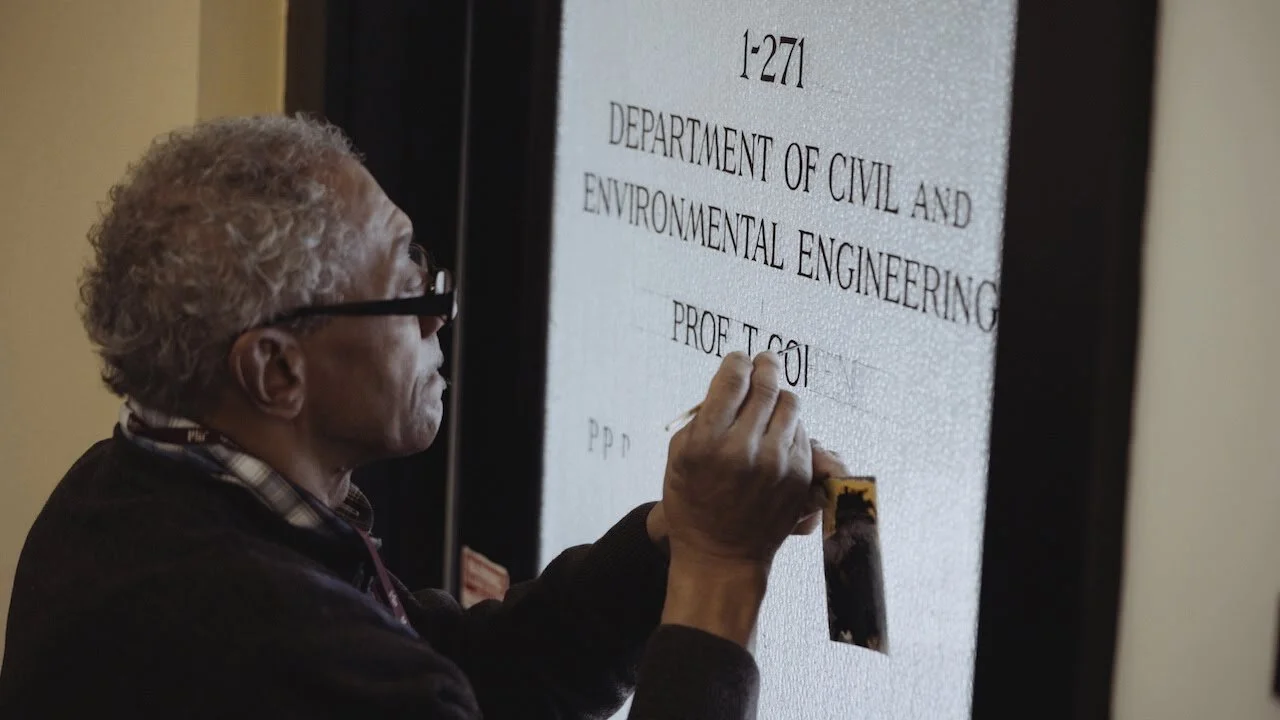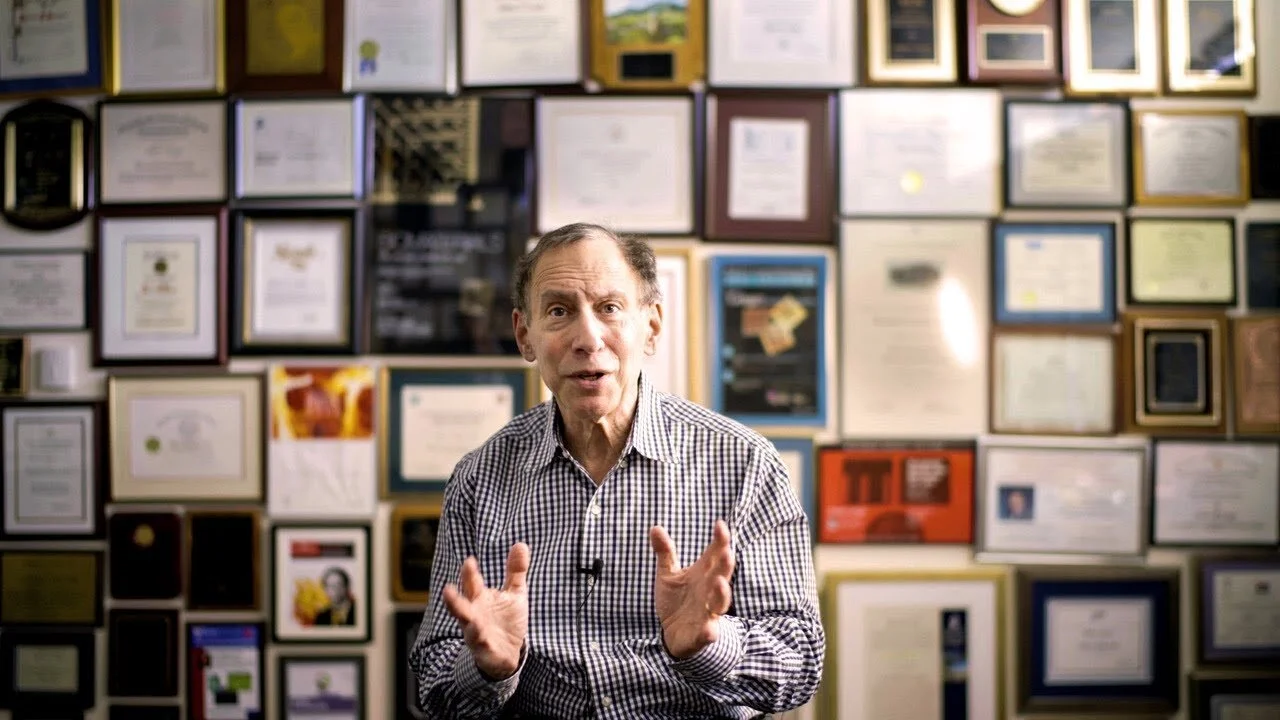Video storytelling that captures the heart of the matter
Opening the doors of perception
Three members of the MIT community - an alumnus, a professor, and an undergrad - reflect on the value of SHASS (School of Humanities Arts & Sciences)
The MIT Initiative for New Manufacturing (INM)
Building on MIT’s founding legacy in manufacturing, INM brings together leading faculty and industry partners to drive advances in productivity, resilience, sustainability, and workforce development to help shape the future of manufacturing in America and beyond.
First Sidewalk Made of Low-Carbon Cement from Sublime Systems
This first outdoor installation of Sublime Cement was placed at Harbor Way at One Boston Wharf Road, alongside the net-zero-carbon office building WS Development completed in 2024.
MIT HEALS: Driving Innovation in Health and Life Sciences
MIT’s Health and Life Sciences Collaborative (MIT HEALS) brings together expertise from across MIT and partners in biotechnology, pharmaceuticals, and hospitals.
Factories on the Frontier: Climbing the technical ladder
In January 2023, there were more than 700,000 factory job openings – more than double the openings in construction. At the same time, three out of four manufacturers listed workforce issues as a primary business challenge. In rural New Hampshire, there’s a manufacturer addressing that challenge head on.
Bringing MIT's human-centered disciplines to the center of the conversation
The MIT Human Insight Collaborative (MITHIC) is an initiative that aims to elevate human-centered research and teaching, and bring together scholars in the humanities, arts, and social sciences with their colleagues across the Institute.
Brain reader
Dr. Sirma Orguc uses computational neuroscience to probe the brain’s “black box” for clues on its functions, and to advance medical technology.
First low-carbon cement pour in Boston largest's net-zero-carbon office building
Sublime Systems CEO Leah Ellis and partners discuss the 'tidal wave' in low-carbon construction and how the industry is working together to accelerate the transition.
Off to the races
Twelve researchers participated in the 2023-24 MIT-Royalty Pharma Prize Competition, designed to support female biotech pioneers. The competition is part of the MIT Faculty Founder Initiative, which was launched in 2020 by the MIT School of Engineering and the Martin Trust Center for MIT Entrepreneurship.
Scalable sustainability solutions
Researchers affiliated with the MIT Climate and Sustainability Consortium are collaborating with member companies to help scale promising lab breakthroughs.
In her nature
Mercy Chepsuge, a young Kenyan environmentalist and EarthLungs Reforestation have joined forces with Carbon Counts, a company committed to uniting individuals with environmental action through their mobile game, EverForest.
Factories on the Frontier: Positive-sum Automation
Factories with robotic automation grow faster and hire more people than those without. But only 1 in 10 American factories has any robots -- and fewer have automated at scale. In the first episode of MIT's Factories on the Frontier series, meet Colin Cutts of G&T Manufacturing to understand how he has transformed his family-owned business.
Looking up
Ever since she can remember, Elissa Gibson has been on the lookout for airplanes overhead. Her passion for flying, and understanding human performance in flight, lead her to double major in aerospace engineering brain and cognitive sciences at MIT.
The ultimate truth
At the age of 12, Fernanda De La Torre crossed the border from Mexico to the United States on foot to escape abuse. For much of her teenage and young adult life, she was unhoused and undocumented as she navigated her education and fell in love with science. Today she is a PhD student at MIT’s Department of Brain and Cognitive Sciences, where she studies multi-sensory perception and neural networks to explore questions about cognition, logic and truth.
Energizing the world
MIT senior, Ayomikun (Ayo) Ayodeji, is a force of nature and active community builder. Graduating with a double major in Chemical Engineering and Management, he aims to improve electricity access for communities back home in Nigeria, and across the African continent.
Pitching transformative ideas in generative AI
Students and postdocs at MIT are racing to the forefront of the generative AI revolution to start companies so they can use this powerful technology for good. They presented their ideas at the MIT Ignite: Generative AI Entrepreneurship Competition.
Collaborative Climate Resilience
When it comes to mitigating risks from climate change, the MIT Climate and Sustainability Consortium is working to understand the needs of its industry collaborators and connect them with relevant researchers at MIT.
Thriving Stars
The Thriving Stars program in MIT’s Department of Electrical Engineering and Computer Science is on a mission to improve gender representation in electrical engineering and computer science.
Learning to fly
Veteran and PhD student Andrea Henshall has used MIT Open Learning to soar from the Air Force to multiple aeronautics degrees.
Unified Flight
For MIT AeroAstro sophomores, Unified Flight is a rite of passage, a set of highly intensive foundation-building classes that set students on a course toward becoming Astronautical Engineers.
Paint by numbers
From one door to the next, the art of hand lettering is still practiced at MIT.
Renew, reuse, recycle
MIT Engineering students are getting onboard with real-world on-board solutions to climate change. They are designing a new reusable recyclable cup for Delta under the guidance of Chemical Engineering Professor Brad Olsen and Civil and Environmental Engineering Professor Desiree Plata.
Point of inception
Civil and Environmental Engineering Professor Desiree Plata and her students at MIT are finding ways to solve environmental problems of the past — and prevent those of the future by creating sustainability-oriented innovations from the start.
Any body can do it
At Upward Spiral, the young and old, professional athletes and newbies, the strong and those recovering from injuries, are all finding deeper strength and mobility through Pilates and the GYROTONIC® Method.
Engineering joy
Graduating senior Izzy Lloyd tells the story of her career at MIT. From spearheading TMAYD (Tell me about your day), to singing acapella with the Chorrallaries, to engineering joy in the Toy Lab, and beyond.
Wizard professor
Mike Short teaches intro to nuclear physics at MIT, which even he admits can be dry. But Short is a wizard professor, casting spells on his students as he leads them through outrageous-sounding assignments that help them not only understand, but also come to love the subject.
Powering the planet
As the world moves towards cleaner and sustainable sources of energy, converting efficiently between electrical and chemical energy will be vital. This is the challenge undertaken by Professor Fikile Brushett and his lab at MIT.
Magical Bob
A fascination with magic leads Institute Professor Robert Langer to solve world problems using the marvels of chemical engineering.
Magical materials
MIT students explore, understand, create—and above all—learn while working with glass and metal in the W. David Kingery Ceramics and Glass Laboratory and Merton C. Flemings Materials Processing Laboratory.
Decoding language barriers
A passion for both human and machine languages led to a MISTI internship with Chinese tech giant TenCent for EECS student Virginia Adams.
Architecture in Japan
Architect Geoffrey Moussas discusses the meaning of design and architecture in Japan, where he now lives and works in Kyoto after receiving his Master’s degree in Architecture in 1993 from MIT.






























